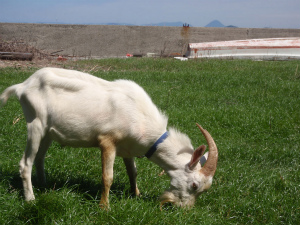少し日が経ちましたが、9月8日、9日で志々島と粟島へ行ってきました。
さらに前の週に行った伊吹島は小さかったですが、伊吹いりこで有名。
一方、この志々島と粟島は何があるのかもよくわかりません。
行ってみましょう。
We visited Shishijima island and Awashima island on 8th and 9th September.
Ibukijima island, where we visited on 4th September is small but is known for its small sardines.
Now, we don’t know Shishijima and Awashima well.
Let’s go!

どうやらウミホタルという生物で有名らしく、詫間町須田港発の船にそのキャラクターが乗っていました。
It is said that these islands are famous for sea fireflies.
A character of a sea firefly was on the boat to the island.

まずは粟島に着き、人生初の船の乗り換え。
右の船から、左の船(志々島行き)に乗り換えます。
At first, we arrived at Awashima and changed the boat for Shishijima.

正面に見えてきたのが志々島です。
Shishijima is on our front.

上陸。
なんとも、やさしい感じです。
島民人口は20人ぐらいと、ものすごく小さな島で、きっと訪れる人も少ない島。
なのに、こうやってかわいいカカシが立っていたり、お花が植わっていたり、島を紹介するパネルがあったりと、ホスピタリティを感じます。
Landed.
A very peaceful atmosphere is there.
However the population is about only 20 and visitor is very few, seeing these cute scarecrows and flowers, we felt the kind hospitality.

この島の見ものは樹齢1000年を超えるという大きなクスノキ。
そこまでの案内も丁寧です。
The landmark here is the great camphor tree, elder than 1,000 years!
The turtle guides us to the tree.

大楠に行く道でやたらたくさんいた虫がこれ。
ハンミョウです。
南国っぽい。きれい。
We saw so many tiger beetles on the way.
Beautiful!

ジャングルのような道は、蚊でいっぱい。
腕を一発叩いたら、蚊を同時に2匹、倒しました。
The road is like in jungle and plenty of mosquitoes!
When I hit my arm, I killed two mosquitoes at once.

到着。
よーく見ると、クスノキの大きな根にうちの奥さんが腰掛けています。
Goal.
Look at my wife is sitting on the huge root.

神社でお参りして、港方面へ戻ります。
After visiting the tree shrine, we went back to the port area.

帰り道で気づいた。
無料貸出し蚊取り線香が商店の前に!
これを携帯するべきでした…。
We found this on the returning way.
Free mosquito coil!
We should carry it BEFORE visiting the tree.

この志々島では農協ですら月2日しか営業してくれません。
ちなみに、行った日の次の日、9月9日はお寿司の日だと張り紙がありました。
島のみんなで集まってお寿司を食べるのでしょう。
Even the Agricultural Cooperatives open only two days a month.
By the way, a sushi party would be held here on the next day we visited.

海岸沿いに見えるこのカラフルな小さなお家。
これ、お墓です。
本島に行ったときにも見かけましたが、ここにも。
両墓制という風習があって、遺骨を埋める埋め墓と、お参りする参り墓と、お墓が2つあるのです。
そういう風習がありました、というのはよくありますが、志々島ではこの風習が現在進行形のようです。
手入れもされていて、新築のお墓もありました。
Small colorful houses along the coast.
These are tombs.
We saw this kind of tomb in Honjima island too.
This traditional custom is “double tombs”.
When a person dies, his relatives make a tomb to bury him and another tomb to visit.
This custom is not past one, it’s going now.
They are well maintained and we found a new tomb also.

ブイ(浮き具)を使ったアート。
現代アートより、こういうのが和むわー。
Cute buoy art.
I prefer these arts to difficult modern art.

ヤギは草を食んでいました。
A goat is eating grass.
ところで、この島、「若宮」という姓が多いそう。
母が志々島出身という友人からの情報。
つい先日、来られたお客さんで志々島と関わりのある方がおっしゃるにもやはり、「志々島には若宮が多い」と。
確かに、お墓を見ると「若宮家」というのもありました。
若宮家が江戸時代、若葉屋と名乗って海運業をしていた頃に活躍していたのが、ちょうどこの志々島周辺、塩飽(しわく)諸島。
このあたりに若宮家のルーツがあるのかも。
It is said that some residents’ family name in Shishijima is same as ours; “Wakamiya”.
This family name is not so common in Japan.
We saw this name on some tombs there.
When my ancestor called themselves “Wakabaya”, they run shipping businesses at Shiwaku islands including Shishijima.
We may have roots around there.
志々島での滞在時間は短く、これからまた、船で粟島へ渡ります。
We went back to Awashima.






